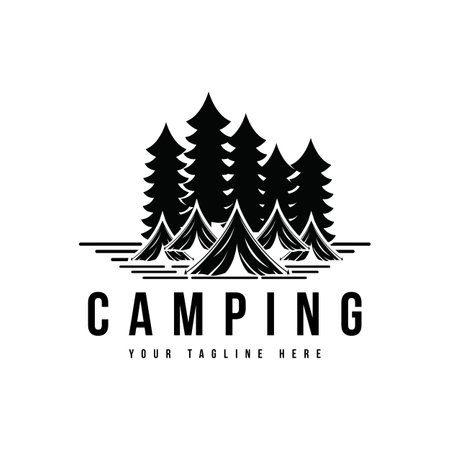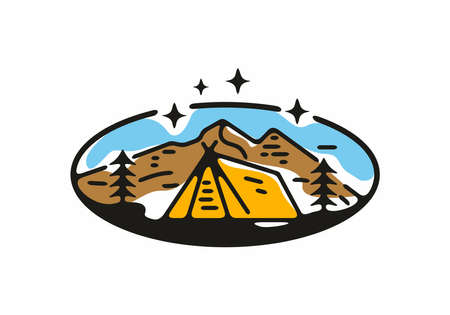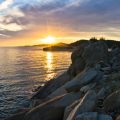Iconic California Coastal Campgrounds
California’s coastline is packed with some of the most scenic beach camping spots in the United States. From the sun-soaked sands of Southern California to the rugged cliffs of Big Sur, there’s a campground for every kind of camper. Whether youre looking to pitch a tent steps from the ocean or park your RV under towering redwoods, these iconic spots are must-visits for any West Coast beach camping adventure.
Top Beach Campgrounds in California
| Campground | Location | Amenities | Best Time to Visit | Reservation Tips |
|---|---|---|---|---|
| Leo Carrillo State Park | Malibu | Restrooms, showers, picnic tables, fire rings, hiking trails, beach access | Spring to early Fall | Reserve 6 months in advance via ReserveCalifornia.com |
| Kirk Creek Campground | Big Sur | Pit toilets, picnic tables, fire rings, ocean views | Late Spring through Fall (check for closures) | This site books fast—plan ahead on Recreation.gov |
| Doheny State Beach | Dana Point | Campsites near the sand, restrooms, showers, picnic areas | Mild year-round, best in late Spring and Summer | Picks up fast during summer—book early through ReserveCalifornia.com |
| Morro Strand State Beach | Morro Bay | Tent & RV sites, restrooms, water, dump station nearby, beachfront access | Largely accessible year-round; best weather from May to October | Lesser known than others but still popular—reserve ahead when possible |
Campsite Features You Should Know About
- Tent vs. RV Sites: Not all campgrounds support both. Double-check availability based on your setup.
- Amenities: Most state-run campgrounds provide basic facilities like restrooms and showers. Some have limited hookups for RVs.
- No Fires Allowed?: Always check current fire restrictions before you go—especially during wildfire season.
- Pets:: Dogs are allowed at many campsites but may be restricted on beaches. Check specific campground rules.
Navigating Reservations Like a Pro
The most popular California coastal campgrounds fill up quickly—especially in peak seasons like summer and holiday weekends. Use ReserveCalifornia.com or Recreation.gov depending on whether it’s a state or federal site. Booking windows typically open six months in advance at 8 AM PT sharp. Set reminders and be ready to book right when it opens!
Pro Tip:
If your desired campground is full, look into cancellations closer to your trip date. Many campers cancel last minute and sites can pop up unexpectedly.
This section highlights just a few of California’s legendary coastal campgrounds—but it’s only the beginning of your West Coast beach camping journey!
2. Hidden Gems on the Oregon Coast
While the California coast often steals the spotlight, Oregon’s coastline offers a quieter, more rugged camping experience that’s perfect for those looking to escape the crowds. The Oregon Coast is dotted with hidden beachside campsites where forested cliffs meet windswept shores—ideal for peaceful nights under the stars and mornings filled with ocean mist.
Why Choose Oregon for Beach Camping?
Oregon’s coastal campgrounds tend to be less commercialized than their southern neighbors, offering a more authentic connection with nature. You’ll find dramatic sea stacks, tide pools teeming with life, and miles of uncrowded beaches. Plus, many sites are open year-round, making them great options even outside peak summer months.
Off-the-Beaten-Path Camping Spots
If youre looking to avoid the usual tourist hubs like Cannon Beach or Newport, here are some lesser-known but highly recommended camping locations along the Oregon Coast:
| Campground | Location | Why It’s Special |
|---|---|---|
| Humbug Mountain State Park | Near Port Orford | Nestled between mountains and ocean; offers hiking trails and secluded beaches. |
| Cape Blanco State Park | South of Bandon | The westernmost point in Oregon; dramatic cliffs and lighthouse views. |
| Oswald West State Park | North of Manzanita | A short hike leads to a quiet beach; great for surfers and hikers alike. |
| Boiler Bay Scenic Viewpoint | Near Depoe Bay | Small and scenic with amazing whale watching opportunities during migration season. |
Insider Tips from Local Campers
- Pack layers: Coastal weather changes fast. A sunny morning can turn foggy by afternoon.
- Reserve early if possible: Some hidden gems still fill up on weekends and holidays.
- Tide charts matter: If youre planning to explore tide pools or walk along narrow beaches, know when high tide hits.
- Bring cash: Not all smaller campgrounds accept cards, especially in remote areas.
- Talk to locals: Small town general stores or bait shops often have tips on secret spots or less-used trails nearby.
Your Quiet Coastal Escape Awaits
If you’re chasing serene mornings by the sea, crackling campfires beneath towering spruce trees, and stargazing without light pollution—Oregon’s lesser-known coastal campsites are calling your name. Trade the tourist crowds for tranquil waves and discover the true magic of West Coast beach camping in Oregon’s hidden corners.

3. Beach Camping Essentials for the West Coast
Planning a beach camping trip along the West Coast? Whether youre pitching your tent on California’s rugged cliffs or Oregon’s misty shores, packing smart is key. The coastal environment brings unique weather and terrain challenges, so having the right gear can make all the difference between a memorable adventure and a soggy mess. Here’s what you need to bring for a successful West Coast beach camping experience.
Must-Have Beach Camping Gear
The Pacific coastline is known for its fog, wind, and chilly nights—even in summer. Be prepared with gear that stands up to these elements:
| Item | Why You Need It |
|---|---|
| Fog-Resistant Tent | Moisture-resistant materials and good ventilation help keep your tent dry inside. |
| Cold-Weather Sleeping Bag | Even summer nights can get cold; choose one rated for 30°F or lower. |
| Sand Stakes | Regular stakes don’t hold well in sand—use sand-specific ones to secure your tent. |
| Tarp or Groundsheet | Protects against damp sand and adds a barrier under your tent. |
| Waterproof Duffel Bags | Keeps clothes and electronics dry from ocean spray and morning dew. |
Campfire Cooking Essentials
No West Coast beach camping trip is complete without cooking over an open flame. Here’s what to pack for tasty seaside meals:
| Cooking Tool | Description |
|---|---|
| Portable Fire Pit or Grill | Many beaches require contained fires—check local rules before you go. |
| Cast Iron Skillet or Griddle | Perfect for searing fresh fish or flipping pancakes by the shore. |
| Heat-Resistant Gloves | Makes handling hot cookware safer and easier around the fire. |
| Cooler with Ice Packs | Keeps perishables fresh even in warm afternoon sun. |
| Reusable Utensils & Plates | Cuts down on waste and keeps things eco-friendly at your campsite. |
Dress for Coastal Weather
The weather along the West Coast can shift quickly—from sunny afternoons to foggy evenings. Dressing in layers is your best bet:
- Base Layer: Moisture-wicking fabric to stay dry.
- Mid Layer: Fleece or insulated jacket for warmth.
- Outer Layer: Waterproof shell to block wind and rain.
- Footwear: Sand-friendly sandals plus waterproof hiking shoes if exploring rocky areas.
- Accessories: Beanie, sunglasses, and sunblock are musts—yes, even when it’s foggy!
Packing Tips for Coastal Campsites
- Check Tides: Set up camp above high tide lines to avoid waking up soaked.
- Scent-Proof Storage: Store food in sealed containers to keep critters away—especially raccoons!
- No Trace Left Behind: Pack out everything you bring in, including trash and food scraps.
- Permit Ready: Many West Coast beaches require camping permits—reserve early during peak season.
Packing thoughtfully ensures youre ready for both the beauty and unpredictability of beach camping on the West Coast. With the right gear and mindset, youll be set to enjoy cliffside sunsets, starry skies, and salty ocean breezes every step of the way.
4. Outdoor Activities and Local Hotspots
One of the best things about beach camping along the West Coast is the variety of outdoor activities right outside your tent or camper. Whether youre exploring the dramatic cliffs of Big Sur or relaxing on the sandy beaches of Oregon, there’s always something to do. Heres how you can make the most of your adventure with a mix of thrill and chill.
Surfs Up!
The Pacific Ocean offers some of the best surfing spots in the U.S., especially along California’s coast. Popular places like Huntington Beach and Santa Cruz are known for their consistent waves and surfer-friendly vibes. Even if youre a beginner, many local surf shops offer rentals and lessons.
Tide Pooling Adventures
At low tide, explore tide pools filled with fascinating marine life like sea stars, anemones, and crabs. Locations such as Haystack Rock in Oregon or Natural Bridges State Beach in Santa Cruz are perfect for this activity. Just remember to wear sturdy shoes and respect the wildlife.
Scenic Hikes with Coastal Views
If hiking is more your style, you’re in luck. The West Coast features countless trails that run along cliffsides, through forests, and down to hidden beaches. Here are some must-visit trails:
| Trail Name | Location | Highlights |
|---|---|---|
| Lost Coast Trail | Northern California | Remote coastline, wildlife sightings |
| Devils Punchbowl Trail | Oregon Coast | Dramatic rock formations, ocean views |
| Bodega Head Trail | Sonoma Coast, CA | Whale watching, wildflowers |
Explore Coastal Towns
Don’t miss out on visiting nearby towns that add charm to your trip. These spots offer great food, unique shops, and a chance to connect with local culture.
Carmel-by-the-Sea, California
This artsy village offers boutique shopping, wine tastings, and cozy cafes—all within walking distance from the beach.
Cannon Beach, Oregon
Known for its iconic Haystack Rock and quaint downtown area filled with galleries and coffee shops.
Morro Bay, California
A laid-back harbor town where you can kayak with sea otters or enjoy fresh seafood by the waterfront.
Pro Tip:
Check local event calendars before your trip—many coastal towns host seasonal festivals or farmers markets that add even more fun to your adventure.
No matter where you set up camp along the West Coast, theres no shortage of things to see and do. From catching waves to grabbing a bite in a seaside diner, it’s all about finding your perfect balance between adventure and relaxation.
5. Tips for Responsible & Sustainable Beach Camping
Exploring the stunning West Coast—from the dramatic cliffs of California to the peaceful shores of Oregon—is an unforgettable experience. But with great beauty comes great responsibility. To help preserve these coastal gems for future campers, here are some practical tips for responsible and sustainable beach camping.
Follow Leave No Trace Principles
The Leave No Trace (LNT) principles are essential for minimizing your impact on nature while enjoying your beach camping adventure. Here’s a quick breakdown:
| LNT Principle | What It Means |
|---|---|
| Plan Ahead and Prepare | Research the area, weather, tides, and regulations before you go. |
| Travel and Camp on Durable Surfaces | Use established campsites or areas where vegetation won’t be damaged. |
| Dispose of Waste Properly | Pack out all trash, leftover food, and litter. Use restrooms if available. |
| Leave What You Find | Don’t take shells, rocks, or driftwood—leave them for others to enjoy. |
| Minimize Campfire Impact | If fires are allowed, use designated rings and keep fires small. Always fully extinguish them. |
| Respect Wildlife | Observe animals from a distance and never feed them. |
| Be Considerate of Others | Keep noise down and respect other campers’ space and experience. |
Protect Coastal Wildlife
The beaches along the West Coast are home to many sensitive species, including nesting seabirds, seals, and tidepool creatures. Here’s how you can help protect them:
- Stay on trails: Avoid walking through dunes or vegetation that could house wildlife nests or burrows.
- No feeding: Feeding animals can harm their health and change natural behaviors.
- Tidepool etiquette: Look but don’t touch marine life in tidepools. Use soft steps to avoid crushing delicate organisms.
- Leash your pets: In areas where dogs are allowed, always keep them leashed to prevent disturbing wildlife.
Respect Local Regulations
Laws and rules vary from beach to beach across California, Oregon, and Washington. Make sure to check ahead before heading out:
- Campsite permits: Many coastal campgrounds require advance reservations or permits—plan early!
- Fire restrictions: Fire bans may be in place due to dry conditions—always follow posted signs.
- No-camping zones: Some beaches do not allow overnight camping—stay within legal boundaries to avoid fines.
- Tide warnings: Be aware of rising tides that can flood camp areas or cut off access routes.
Sustainable Gear Tips
If you’re gearing up for your trip, consider choosing eco-friendly products that reduce waste and environmental impact:
| Item | Sustainable Option |
|---|---|
| Tent | Select one made with recycled materials or minimal chemical treatments |
| Cookware | Use stainless steel or titanium instead of disposable items |
| Lanterns & Flashlights | Opt for solar-powered or rechargeable models |
| Water Bottles | Avoid single-use plastic; bring reusable bottles with built-in filters if needed |
Caring for our coastlines ensures that future generations can enjoy the same incredible views, peaceful sunsets, and wild Pacific breezes that we do today. Whether youre pitching a tent near Big Sur’s cliffs or watching the waves roll in at Cannon Beach, every small action counts toward protecting these magical places.


